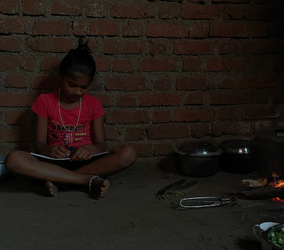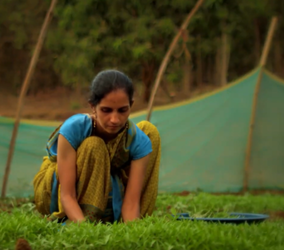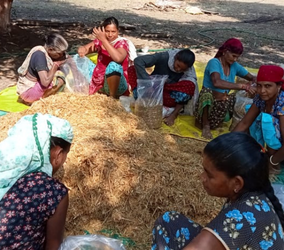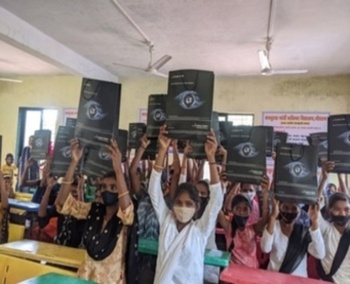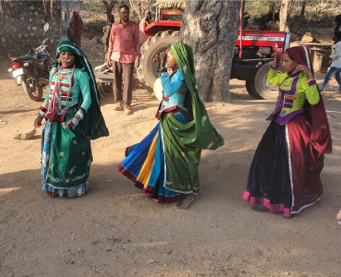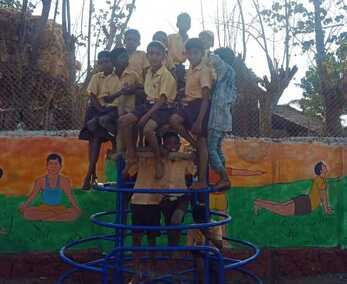From Darkness to Empowerment: Project Chirag’s Impact on Mothers’ Lives
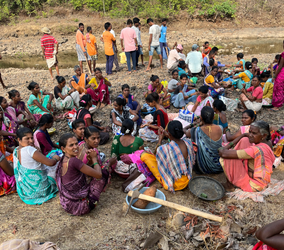
Improving the lives of women, especially mothers, in rural India often starts with the basics: clean water, reliable electricity, and a sense of safety. At Project Chirag, we know how access to these essentials can change daily routines and open up new possibilities.
As Mother’s Day approaches, let’s take a look at how Project Chirag initiatives have changed the lives of women and mothers.
How Electrification Has Brought About More Than Just Rural Women Empowerment
One of the main projects we undertake is the electrification of villages, because in modern times, electricity has become more than just a source of light. We, in the cities, who have become so accustomed to having our air conditioners and kitchen appliances, might not realise. However, the fact is that there are still parts of the country where reliable electricity is a distant dream. Without electricity, the struggles are real and having understood those, we are trying to bring about a change.
Here are just some ways how solar energy for rural families is helping women, especially mothers:
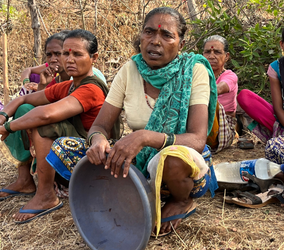
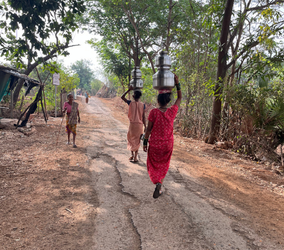
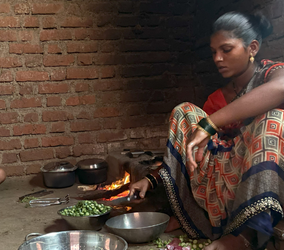
1. Easy access to water
This is one of the most significant benefits that electrification brings to women in rural India. Let’s take the example of Janki Damu Waghat from Murbichapada, Maharashtra. She had to wake up as early as 2 or 3 AM to walk to the local water body to collect enough water to last her family for the day. Why so early, you might wonder! The reason is that this same water body was used throughout the day for various chores—washing clothes, bathing, and even cleaning animals. By sunset, the water would be heavily contaminated. Villagers would wait until
late at night when the dirt had settled at the bottom. There was already a hole dug at the edge of the river, and once the contaminated water settled, relatively cleaner water would collect in that spot, making it suitable for drinking.
When we introduced solar-powered electricity, the village now had access to water closer to home. The tank would be filled with water using electric motors, ensuring access 24 hours a day, just a few metres away.
This helped save both time and energy for the women. They could now use it better to spend time with family or even start small enterprises. This also protected them from the dangers they previously faced—walking through steep, forested slopes in the dark, where encounters with wild animals were a real threat.
2. Improved safety and security
When streets and pathways are well-lit, there is a sense of safety. Whether it’s stepping out to fetch water, chatting with neighbours, or taking a brisk walk to end the day, streetlights can help women move about freely. Mothers can relax knowing their little ones can play in a well‑lit yard or community square until the streetlights come on. They can watch from the doorway, confident that their children are safe and having a good time.
In moments of crisis, whether it’s a sudden illness, an injury, or simply an empty sugar tin, having light means women can find their way more quickly and get things done. Lighted public spaces encourage neighbours to come together for evening prayers, cultural events, or simply a cup of tea. This not only deepens social bonds but creates “eyes on the street,” further enhancing security.
3. Better maternal and child healthcare
Rural women empowerment goes beyond just ensuring clean water or entrepreneurial opportunities for women. It also means they can be better mothers. Let’s see what would happen when a local primary health centre (PHC) lacks electricity or proper equipment? In this case, a pregnant mother may not receive the care she needs, including during delivery. Her newborn infant might not get the care, including vaccinations, on time.
Through our PHC Solar Support packs and mini-grids, we have helped power lights, fans, and other essential medical equipment. Powered refrigerators and medical freezers in these PHCs made it easier to maintain vaccines at the proper temperatures. Now pregnant women can get their full courses of tetanus shots, and newborns can receive their first dose of Hepatitis B within 24 hours of birth, too.
Moreover, midwives and nurses no longer have to boil water using kerosene lamps, and staff can administer IV drips, perform minor surgeries, or stabilise mothers for safe transfer to higher-level hospitals without fumbling in the dark.
4. Enhanced educational opportunities
For a women empowerment program to be a success, women need to come forward and speak up – their voices need to be heard, and when we have spoken to women in rural India, so many of them have talked about the importance of education. They have expressed their desire to see their children earn the education that they might not have had the opportunity to gain.
So, when we help electrify local Anganwadis and schools, we ensure that the dreams of these mothers come true. With digital devices, children have become much more interested in learning, according to Kalpana Ware, an Anganwadi Sevika from Kondane. As per her, digital education has revolutionised both teaching and learning.
Similarly, Sunanda Ravate, a student at Chatrapati Kanishth Mahavidyalaya in Vikramgad, speaks about how electricity and digital devices have improved learning and how well-lit classrooms have changed the overall perception of schools. We have undertaken several school electrification projects, enabling a more educated generation of future mothers to enter the world.
When you donate to the Integrated Village Development Project via Project Chirag, you might be doing something to help mothers across rural India. So, why not do your bit this Mother’s Day?
